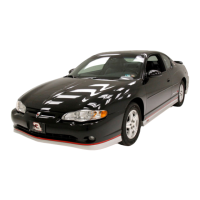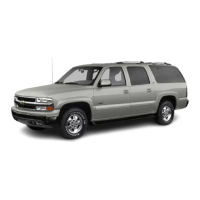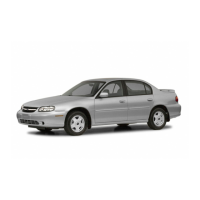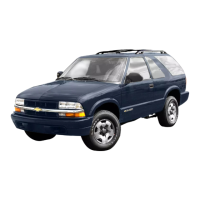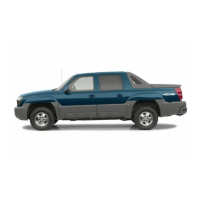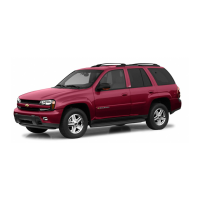
Do you have a question about the Chevrolet 2002 Camaro and is the answer not in the manual?
| Brand | Chevrolet |
|---|---|
| Model | 2002 Camaro |
| Category | Automobile |
| Language | English |
Information on adjusting front and rear seats, including manual and power seat options.
Guidance on proper safety belt usage for all occupants and their importance in preventing injury.
Detailed instructions for adults on wearing lap-shoulder belts correctly, including common errors.
Guidance on safe safety belt usage for pregnant women and protecting the fetus during a crash.
Explanation of the vehicle's air bag system, its function, limitations, and safety precautions.
Instructions for operating manual and power windows, including safety precautions for children.
Details on locking and unlocking vehicle doors, including manual and power lock operations and safety.
How to use the remote keyless entry transmitter for locking, unlocking, and trunk release.
Explanation of the five ignition key positions (ACCY, LOCK, OFF, RUN, START) and their functions.
Explanation of shift lever positions (P, R, N, D, 2) and their functions, including shift lock controls.
How to operate five-speed and six-speed manual transmissions, including shift patterns and speeds.
Overview of the instrument panel components and their functions, including gauges and indicators.
Explanation of various warning lights, gauges, and indicators on the instrument panel and their meanings.
How to operate the heating, air conditioning, and ventilation systems using the temperature, mode, and fan knobs.
Guide to operating the vehicle's audio system, including radio, CD player, and sound adjustments.
How to operate radio functions: power, volume, tuning, seeking, scanning, and presets.
How to load, play, and manage discs in the trunk-mounted CD changer.
How to activate and use the THEFTLOCK system to protect the radio from theft.
Essential techniques for safe driving, emphasizing awareness and anticipation of hazards.
The dangers of alcohol's effects on driving ability, BAC information, and legal limits.
Explanation of braking action, perception/reaction time, stopping distances, and avoiding heavy braking.
How the ABS system works to prevent braking skids and its normal operation.
Guidance on power steering, driving on curves, and emergency steering techniques.
Understanding skidding (braking, steering, acceleration) and how to regain control.
Precautions for driving in wet conditions, including hydroplaning, brake care, and visibility.
Advice and preparation for safe driving in winter conditions, including snow and ice.
Guidance on proper vehicle loading, weight distribution, and capacity limits to ensure safe handling.
Essential safety rules and tips for towing trailers, including weight limits, handling, and pre-trip checks.
How to use hazard warning flashers to alert others and signal a vehicle problem.
Safe procedures for jump starting a vehicle with a dead battery using jumper cables.
What to do if your engine overheats, including protective operating modes and warnings.
Overview of the cooling system components and safety precautions when working under the hood.
Step-by-step guide on how to safely change a flat tire using the vehicle's jack and tools.
General information on vehicle service, dealer recommendations, and genuine GM parts.
Details on gasoline octane requirements, fuel specifications, additives, and refueling precautions.
Information on checking engine oil level, when to add oil, and the correct type and viscosity of oil to use.
Guidance on checking and changing automatic transmission fluid and filter, including service intervals.
Guidance on tire maintenance, including pressure checks, inspection, rotation, and buying new tires.
Tips for cleaning and maintaining the vehicle's interior and exterior appearance, including materials to avoid.
Explanation of the vehicle's electrical protection system, including fuse locations and replacement procedures.
Approximate capacities for vehicle fluids and lubricants, and key technical specifications.
Explains the importance of vehicle maintenance for safety, environment, and longevity.
Details maintenance services, intervals, and recommendations for optimal vehicle performance.
Lists routine checks and services owners can perform to maintain vehicle condition at each fuel fill and monthly.
Outlines important inspections to be performed by dealers or qualified service centers, such as steering and exhaust systems.
Specifies recommended fluids, lubricants, and their part numbers for vehicle maintenance.
A log for recording maintenance performed, including dates, mileage, and service providers.
Steps to follow to resolve concerns with dealers or Chevrolet customer assistance.
Contact details for Chevrolet Customer Assistance Center in the United States and Canada.
Details on the free roadside assistance program, including services and contact information.
Reference to the separate warranty booklet for detailed coverage information.
How to report vehicle safety defects to NHTSA and the process for investigations and recalls.
Information on how to order service manuals, repair manuals, and service bulletins.

